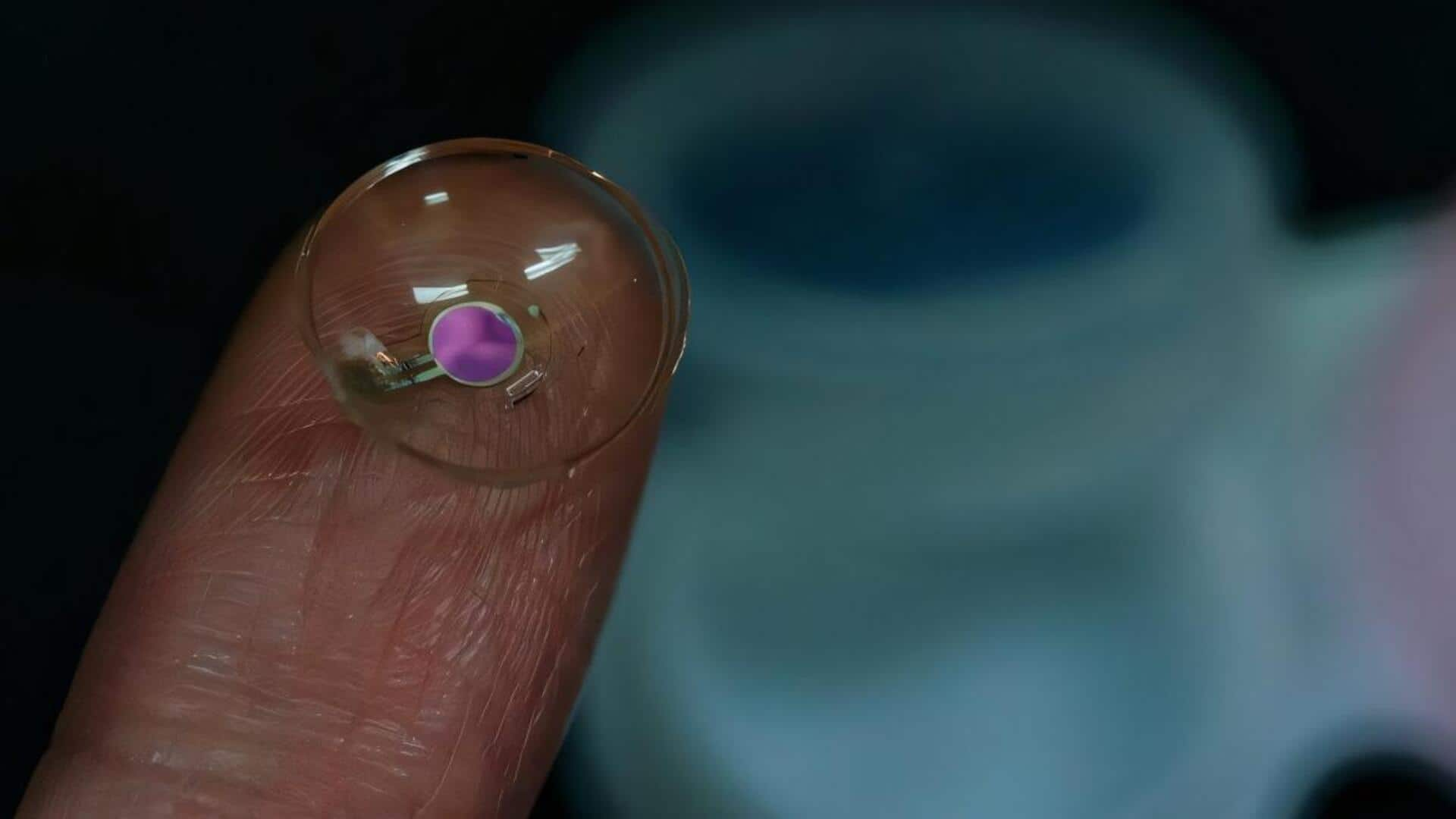
Koreans develop world's first OLED contact lens for eye diagnostics
What's the story
A team of researchers from the Korea Advanced Institute of Science and Technology (KAIST), Electronics and Telecommunications Research Institute (ETRI), and Seoul National University Bundang Hospital have developed a pioneering wireless OLED-based contact lens. The innovative device is capable of diagnosing retinal conditions without requiring bulky machines or dark rooms. The new technology could revolutionize eye care by making retinal diagnostics more accessible and convenient for patients.
Mechanism
The lens connects to a sleep mask controller
The contact lens features an "ultrathin OLED" display, which is just 12.5 microns thick (about the width of a human hair). It emits uniform light across the retina, allowing doctors to take accurate readings without needing a traditional darkroom setup. The lens also comes with a tiny wireless antenna and connects with a sleep mask controller for a compact, portable testing kit that can even connect with smartphones.
Testing
Animal trials have shown it works safely
Animal trials have shown that the OLED contact lens works safely, generating minimal heat and performing well even in humid conditions. This means it could provide a comfortable, user-friendly test that can be conducted in bright, open clinics instead of isolating exam rooms. The convenience offered by this technology could be a game-changer for early detection of retinal diseases such as diabetic retinopathy.
Potential uses
The lenses could also be used for myopia treatment
The potential applications of this technology go beyond just diagnosis. In the future, such lenses could be adapted to treat myopia, monitor ocular cues of well-being, power augmented reality (AR) experiences, or provide light-based therapy to sustain brain health. The thin design ensures that users can wear them without their vision being blocked or feeling any real discomfort while still delivering accurate results that doctors can trust.